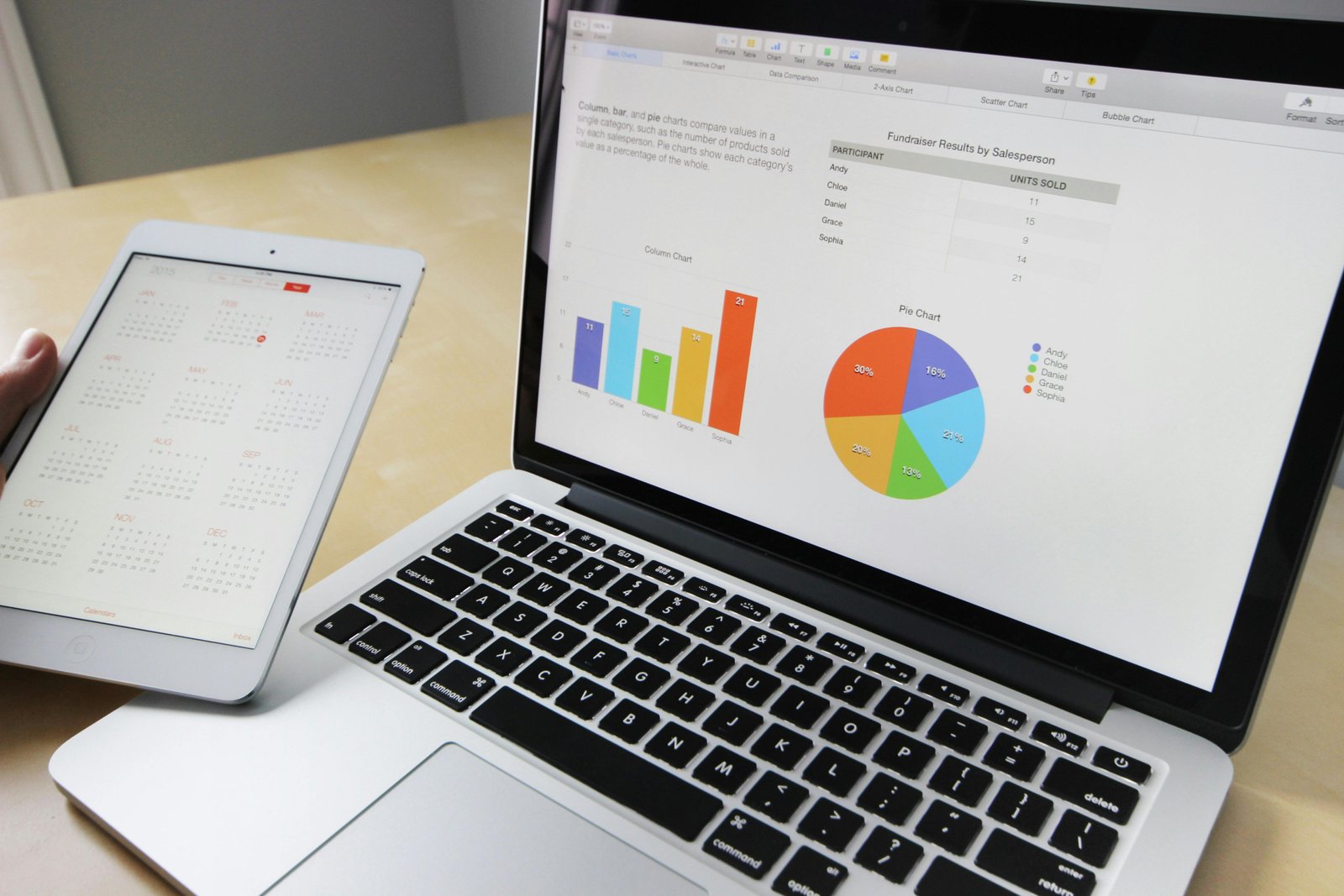TL;DR:
- In learning how to create a financial model for a small business, financial modeling aids small businesses in analyzing performance and planning.
- Key components: revenue forecasting, expense tracking, cash flow analysis, income statement, balance sheet, financial assumptions.
- Essential tools: Microsoft Excel, Google Sheets, Baremetrics, QuickBooks.
- Key steps in creating a financial model: Gather data, calculate ratios, make assumptions, create forecasts, assess value, review and refine.
- Financial forecasting and scenario analysis support budgeting and growth preparation.
- Income statements track profitability; balance sheets assess financial position; cash flow statements manage liquidity.
Have you ever wondered how to create a financial model for a small business? It’s not just about crunching numbers – it’s like drawing a map to success! A good financial model helps business owners see where they’ve been, where they are now, and where they’re heading. By turning operations into numbers, decision-makers can steer their companies towards growth. In this article, we’ll break down the basics of financial modeling, focusing on how it helps with planning and making smart choices. We’ll pay special attention to predicting future income. So, let’s dive in and learn how your small business can thrive with a solid financial game plan!
Understanding the Basics of Financial Modeling for Small Businesses
Financial modeling is crucial for small businesses because it represents a company’s operations in numbers. It helps business owners and decision-makers analyze past performance, grasp current operations, and plan for the future. By focusing on revenue forecasting, small businesses can make informed financial decisions.
Creating a detailed financial model offers several benefits. It allows businesses to simulate real-world scenarios, preparing them for potential outcomes. This is vital for budgeting, securing investments, and ensuring steady growth.
- Revenue forecasting
- Expense tracking
- Cash flow analysis
- Income statement
- Balance sheet
- Financial assumptions
These components form the backbone of a robust financial model. Revenue forecasting predicts future sales, while expense tracking monitors costs. Cash flow analysis ensures there’s enough liquidity for expenses. The income statement shows profitability, and the balance sheet lists assets and liabilities, reflecting financial health. Financial assumptions provide the groundwork for realistic projections. Together, these help small businesses make sound decisions.
Essential Tools and Software for Small Business Financial Modeling

Spreadsheets are often the go-to tool for small businesses starting their financial modeling journey. They offer flexibility to input data, create formulas, and visualize financial projections. Microsoft Excel and Google Sheets are popular because they are accessible and handle complex calculations. However, as models grow, they can become cumbersome, leading to errors.
Advanced financial modeling tools enhance accuracy and efficiency when you’re figuring out how to create a financial model for a small business. Tools like Baremetrics and QuickBooks offer structured approaches. Baremetrics automates data collection, reducing manual input and errors. QuickBooks integrates features for tracking expenses and revenue, helping maintain accurate records. These tools help businesses build accurate models efficiently, focusing on strategic planning. As you learn how to create a financial model for a small business, these advanced tools can simplify the process and improve the reliability of your projections.
- Microsoft Excel
- Google Sheets
- Baremetrics
- QuickBooks
Key Steps in Creating a Financial Model for a Small Business
Creating a financial model involves capturing a company’s financial health and projecting its future. Here are the key steps:
- Gather data from financial statements.Collect historical data from your income statement, balance sheet, and cash flow statement. This data forms the baseline for your model, identifying trends and patterns.
- Calculate key financial ratios.Use the gathered data to compute ratios like profit margins and liquidity ratios. These metrics assess the business’s financial position and efficiency.
- Make informed assumptions.
Develop assumptions about future revenue and expenses from past performance and market trends. Ensure assumptions are realistic and data-backed for reliability.
- Create a business forecast.Use assumptions to build forecasts for sales and cash flow, projecting financials under different scenarios. This helps plan and anticipate challenges and opportunities.
- Assess the company’s value.Analyze projected financials to estimate the company’s worth, essential for attracting investors or securing financing.
- Review and refine the model.
Update and adjust your model to reflect new data. Regular reviews ensure accuracy and credibility.
Following these steps helps build a comprehensive financial model, guiding strategic decisions and future planning.
Incorporating Financial Forecasting and Scenario Analysis

Financial forecasting is crucial in business planning, especially when you’re learning how to create a financial model for a small business. It uses past and current data to predict future performance, aiding in budgeting and preparing for growth. Scenario analysis complements forecasting by considering different variables and hypothetical events, allowing businesses to prepare for various outcomes.
These models provide essential insights for strategic planning when you create a financial model for a small business. Trend forecasting identifies patterns for future projections. Sensitivity analysis highlights impact factors. Scenario modeling prepares for unexpected changes. Monte Carlo simulations assess risk probabilities, offering a comprehensive risk and reward view.
Utilizing Income Statements, Balance Sheets, and Cash Flow Projections
The income statement showcases profitability over time by detailing revenue and expenses. It tracks financial performance, helping to identify growth opportunities.
- Key revenue and expense items
- Gross profit and net income
- Operating and non-operating expenses
The balance sheet highlights a company’s assets and liabilities, providing a financial position snapshot. It assesses financial stability and liquidity.
- Asset categories (current and non-current)
- Liability categories (short-term and long-term)
- Owner’s equity and retained earnings
The cash flow statement shows inflows and outflows, vital for liquidity management. It helps businesses manage cash efficiently, avoid shortages, and optimize strategies.
- Operating cash flow
- Investing cash flow
- Financing cash flow
Understanding these financial statements helps small businesses maintain healthy operations and ensure sustainability.
Final Words
Learning how to create a financial model for a small business is a key step in shaping its future. By getting the hang of financial modeling basics, small business owners can make smart plans and choices using income guesses, profit reports, and financial snapshots. With the right tools and know-how, businesses can keep track of what they spend and predict their cash flow. It’s all about gathering information, making educated guesses, and fine-tuning the model to make it more accurate. Armed with this guide, small businesses can tackle money matters with confidence, paving the way for steady growth.
FAQ
How to create a financial model for a small business?
To create a financial model for a small business, start by gathering past financial data. Then, make educated guesses about future income and expenses. Use tools like spreadsheets to create income statements, balance sheets, and cash flow projections. Finally, review and update your model regularly to keep it accurate.
What tools do I need for financial modeling?
For financial modeling, you’ll need spreadsheet software like Microsoft Excel or Google Sheets. As your business grows, you might want to use more advanced tools like Baremetrics or QuickBooks, which can help make your models more accurate and easier to update.
Why is financial modeling important for small businesses?
Financial modeling is important for small businesses because it helps owners understand their company’s financial health. It allows them to predict future income, plan for expenses, and make informed decisions about growth. It’s also useful when seeking loans or investors.
How often should I update my financial model?
You should update your financial model regularly, ideally every month or quarter. This helps ensure your projections stay accurate as your business changes. It’s also a good idea to review and adjust your model whenever there’s a big change in your business or market.
What are the main parts of a financial model?
The main parts of a financial model include revenue forecasts, expense tracking, cash flow analysis, income statements, and balance sheets. These components work together to give a complete picture of your business’s financial situation and help you plan for the future.

